Master WordPress and HubSpot's Integration
Integrating your WordPress website with HubSpot is a no-brainer. It is quick and easy, letting you harness the power of a unified website & CRM
A CRM audit is a comprehensive review of your customer relationship management (CRM) system with the goals of finding errors or ways to improve approach.
While HubSpot is a robust platform capable of transforming your business, many organisations fail to fully leverage its capabilities. Are you one of them? Signs such as low product adoption, inconsistent reporting, misaligned processes, and missed inbound marketing opportunities could indicate that your HubSpot portal isn’t being utilised to its full extent.
Despite HubSpot’s wide range of features, most companies underuse key functionalities within their portals. If you’re still manually compiling reports in spreadsheets or struggling to get actionable data, it’s a clear signal that your HubSpot setup needs attention—and a portal audit could be the solution.
In this blog post, we’ll guide you through the process of conducting a comprehensive HubSpot audit, explaining its importance, objectives, and key strategies. By the end, you’ll have the tools to ensure your HubSpot portal is optimised to drive success
A HubSpot audit is a comprehensive review and analysis of how a company is utilising its HubSpot platform within their business. The goal is to assess the efficiency and effectiveness of the current HubSpot setup and usage, identifying opportunities for improvement in key areas such as marketing, sales, CRM, and customer service automation.
The audit process involves examining both the technical and strategic aspects of your HubSpot portal, including settings, configurations, integrations, user permissions, content management, and analytics data. It aims to identify areas of friction where HubSpot is not performing optimally, along with potential enhancements to streamline workflows, improve usability, and boost results.
An audit will also uncover opportunities for optimisation, such as improving analytics tracking or making adjustments to marketing and sales strategies to better align with business goals. By conducting a thorough review, you can pinpoint where the CRM system is underutilised, ensuring that HubSpot is being leveraged to its full potential.
Regular HubSpot audits ensure continuous improvement, allowing businesses to stay ahead of potential issues and make informed decisions about their HubSpot usage. This proactive approach maximises ROI and ensures that the platform continues to drive growth and success..
Conducting an audit of your HubSpot portal on a regular basis has numerous benefits, including:
While completing a peridoic review every six months is recommended, their are several telltale signs that suggest that you might not be getting the most out of HubSpot or could enhance your usage. Some of these indicators include:
Disparate or Misaligned Processes: Lack of integration in your marketing and sales processes can make it difficult to track and measure the effectiveness of your efforts. HubSpot can assist in integrating these processes if set up and used correctly
Reporting & Analytics: If the results from your marketing and sales efforts fall short of expectations, it could be due to issues with configurations or settings in your HubSpot portal such as how you are collecting data, or simply because you're not using the platform effectively.
Low Rate of Product Adoption: Uncertainty about using specific features or tools in HubSpot may indicate that you're not maximising the platform's potential.
Asset Management Challenges: If you find it challenging to locate or understand assets in your portal, such as lists, workflows, emails, or landing pages, it may indicate a lack of proper asset log maintenance. Consider implementing better naming conventions for clarity.
Operational Issues in CRM and Database Management: Sending incorrect emails, inaccurate lead entries, reliance on reports without confidence, lack of understanding of contacts and their status, below-average email deliverability, and open rates—all these point to potential problems in CRM usage, database segmentation, and overall operational efficiency.
Team Collaboration and Updates: If your teams, including sales, marketing, and service, are struggling with too many meetings to get updates on leads, it suggests a lack of proper lead updates in the CRM and a clear handover process within departments.
Management Reporting and Integration Concerns: Daily management requests for updates that don't make sense could indicate issues with reports. Considering additional platforms for your MarTech stack without clarity on their integration with HubSpot suggests a need to reassess the tools HubSpot offers and their compatibility.
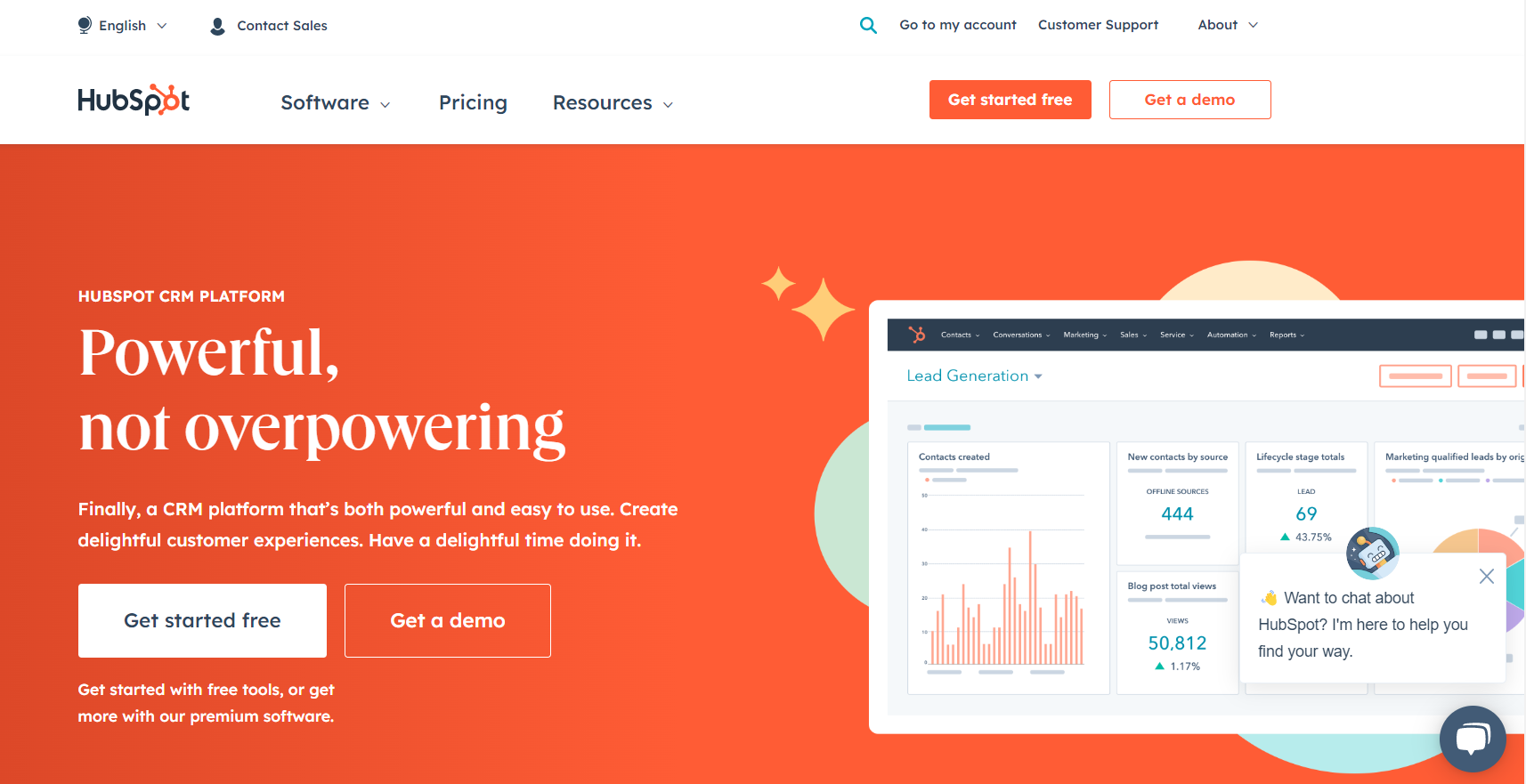
Implementing structure and order in your portal is analogous to conducting a financial audit. The objective of a portal audit is to meticulously examine every aspect of your portal to identify potential gaps. Here are several scenarios to consider when conducting a HubSpot portal audit:
Technical Audit
This includes connecting your domain, linking your website, integrating your social media accounts, and configuring your paid ad accounts. Setting up all your branding assets, such as logos and brand colours, is essential.
Ensuring Domain Connectivity
Ensure that the domains associated with your business are correctly linked within HubSpot. Are your domains seamlessly connected? It's paramount to double-check this vital aspect. Your domains encompass the URLs where your company website resides and where your company emails are anchored. Establishing a connection between your domains and HubSpot is crucial, especially if you intend to host your content on the platform.
For instance, constructing your blog or landing pages with URLs branded under your company domain name, rather than HubSpot's, ensures a more professional appearance. Similarly, sending emails from HubSpot using your company email addresses is facilitated through domain connection.
If you encounter challenges with these aspects, follow these steps:
1. Navigate to "Settings" at the top right-hand corner of your portal.
2. Scroll down the left-hand side menu and select "Website | Domains and URLs."
Once there, you should observe green dots indicating the connection status of various domains, such as Blog and Landing pages.
If you wish to create additional sub-domains for hosting specific content, like events, you can always connect extra domains.
However, if you notice the absence of a green dot on a supposedly connected domain, you need to reconnect it. To do this, ensure you have super admin access to your HubSpot portal and access to the domain name server provider where you purchased the domain
Upon securing the relevant access, click "Continue" on the blue banner at the top of the page and proceed to complete the subsequent steps.
Branding:
Ensure that all elements requiring your updated branding, including logos and brand colours, have been appropriately adjusted. HubSpot provides two locations where you can update your brand assets.
Firstly, navigate to "Settings | Account Defaults | Branding | My Brand Kit. This Brand Kit allows you to choose options for creating public-facing content such as emails.
Secondly, you can update your branding by going to "Settings | Website | Pages | Branding," as illustrated in the screenshot. This is where you modify your logo for pages like blogs, landing pages, and unsubscribe pages. When you update your logo here, the default size is around 2,500 x 500 px. As such, it's advisable to adjust it by making the sizes smaler, such as 640 x 237 px.
Subscriptions:
Check that the pages enabling your subscribed contacts to unsubscribe are functioning correctly. Confirm that the unsubscribe pages for your subscribed contacts operate as intended, providing a seamless experience. One of the most often overlooked yet straightforward points of reconversion is the unsubscribe page. According to regulations, every marketing email must include an unsubscribe button. HubSpot has already included this button in your marketing emails by default, but you may wish to make adjustments when reviewing this page.
To access this page, go to "Settings." Then, via the left-hand menu, scroll down to "Marketing | Email | Subscriptions," as illustrated in the following screenshot. Once there, you will encounter three options:
• Subscription preference pages: This page enables users to decide which of your subscription types they want to stay subscribed to or unsubscribe from.Social Channels Connected:
Ensure the seamless integration of your social media accounts and paid advertising channels with HubSpot for efficient management.
In accordance with their privacy policies, the integration of most social media channels with third-party tools may have periodic expirations. These expirations could take place every 3 months, annually, or at the discretion of the respective platforms. Therefore, it is advisable to double-check and confirm that all pertinent social media channels and paid channels remain connected.
To ascertain the status of your channels, go to "Settings." Then, through the left-hand side menu, navigate to "Marketing | Social" and click on "Accounts."
As illustrated in the preceding screenshot, you will identify which accounts require attention, and subsequently, you can click the "Reconnect" button. As always, ensure you possess super admin access to HubSpot and hold administrative privileges on the social media channels you aim to connect.
Naming conventions:
Establishing a clear naming convention for these assets will help streamline your HubSpot portal, making it easier to locate and manage different elements within your marketing, sales, and service efforts. Customise the naming convention based on your specific needs and preferences. Establishing consistent naming conventions that are easy to understand and find using search filters is key to managing a HubSpot portal and making future changes. HubSpot assetsAn effective naming convention could include the name of the asset. Some example assets that can be name in HubSpot with naming conventions include:
| Emails | Landing Pages | Blog Posts | Workflows | Forms | Lists |
|---|---|---|---|---|---|
| Newsletter_Email_January2024 | ProductLaunch_LandingPage | SEO_Tips_Blog_Post | Lead_Nurture_Workflow_Jan2024 | Contact_Us_Form | Subscribers_List -All Time |
| Welcome_Email_Template | Event_Registration_LP_Jan2024 | Company_Update_April2024 | Onboarding_Automation_Jan2024 | Webinar_Registration_Form | VIP_Customers_List |
| Campaigns | Coded Files | Calls-to-Action (CTAs) | Social Media Messages | Ad Campaigns | Templates |
|---|---|---|---|---|---|
| Summer_Sale_Campaign | CSS_Styling_File | Download_Ebook_CTA | Twitter_Post_ProductLaunch | Google_Ad_Campaign_SpringSale | Email_Template_Welcome_Series |
| Holiday_Promotion_Campaign | JavaScript_Functions_File | Subscribe_Newsletter_A | Facebook_Ad_Campaign_April2024 | LinkedIn_Ad_Campaign_BrandAwareness | Page_Template_Event_Registration |
| Documents | Meetings | Reports |
|---|---|---|
| Proposal_Document_ClientA | Sales_Demo_Meeting | Monthly_Lead_Conversion_Report |
| Whitepaper_Marketing_Trends | Support_Call_Meeting | Campaign_Performance_Report |
Folder structure:
Utilising folders is another method to keep your items organised. Most assets in HubSpot, such as lists, files, emails, and workflows, can be categorised into folders. These folders should adhere to a pattern similar to your naming convention, thereby enhancing the organisation and accessibility of your portal's assets.
Account Access:
Review the portal's settings and configurations to ensure they are accurate and up to date.
This includes the general settings, such as the portal's name and time zone, as well as more specific settings like email and marketing automation configurations.
It is essential to verify who currently has access to the platform and their level of access. This provides an opportune moment to review all users on your platform to ensure you understand who they are, their role, and how they are expected to utilise HubSpot, thereby determining their appropriate level of access. For instance, consider whether all individuals with super admin access truly require such privileges. Super admin access allows users to edit, delete, and view everything within your portal. Critically, they possess the capability to delete everything in your portal, and it is important to remember that deleted items cannot be recovered. Therefore, particular attention should be paid to those with super admin access. Another group warranting scrutiny includes your external vendors. Occasionally, a web developer may need access to your portal to develop customised landing pages or website pages for your brand. While they require access to HubSpot's development tools, they should not have access to your contact data. Hence, ensuring their visibility is set to View – None, Edit – None, and Delete – None will protect your data.
Understanding the Buyer Journey
At this stage, we recommend that you have a plan for the five scenarios most contacts will typically encounter in your business:
Entry Path: Define a process for how new leads are treated. Consider updating lead status and life cycle stage fields, such as Lead status - New and Lifecycle stage – Subscriber or Lead, based on actions like subscribing to a newsletter or downloading content.
Customer Paths: Map out various paths for a contact to move along the journey of becoming a customer. Consider criteria like downloading specific content for Marketing Qualified Lead (MQL) status and additional criteria for Sales Qualified Lead (SQL). Create workflows to automate these paths.
Rapid Path: Consider how to treat hot leads who immediately request a demo or spend significant time on your website. Notify sales promptly through email or text and use specific lead status and life cycle stage combinations, such as New | MQL, for prioritisation.
Exit Path: Some contacts may not be relevant, like students or competitors. Build workflows with enrollment triggers to set contacts with a lead status of unqualified based on certain criteria. This helps prevent irrelevant leads from reaching your sales teams.
Recycled Path: Leads that reached out to sales but were not ready to buy or lost opportunities can be returned to the marketing team for nurturing. Create a recycled path by allowing sales reps to choose a reason for Closed Lost deals, and set up predefined sales nurtures accordingly.
Taking the time to map out these five possible paths for contacts entering your database will help you set up more successful campaigns as you gain a better understanding of the contacts in your database.
Marketing Hub Audit
When carrying out a marketing audit, key areas to review include: Contact property fields, list segmentation, lead source, email campaigns, lead management, reporting, landing page optimisation, forms, tracking URLs, and much more.
Contact Fields and Segmentation:
Assess the percentage of your contacts with completed fields that you consider essential for a comprehensive understanding of your database.
For example, each contact in your database should possess a valid email address. To verify this, generate an active list using filters such as "Email address is unknown," "Email hard bounced reason is known," "Unsubscribed email is equal to True," or "Opted out of all email marketing information is known," as illustrated in the following screenshot.
Upon obtaining this figure, divide it by the total number of contacts in your database and then multiply it by 100 to determine the percentage of invalid entries.
Repeat this process to identify contacts lacking job titles, with unknown countries, or any other criteria crucial for understanding your contact database. This information guides you in segmenting your database to provide relevant information or enroll contacts into specific nurture content. Throughout the audit, you'll identify fields with missing information, allowing you to consider tighter restrictions or implement additional workflows or integrations with platforms like HubSpot Clearbit or Zoominfo to fill in any gaps in contact information.
For instance, if the country field is absent, essential for assigning contacts to respective sales reps, you have options. Firstly, ensure the country field is mandatory for all forms on your website and campaigns. Alternatively, create workflows to copy the Internet Protocol (IP) country to the country field, as the IP country is automatically captured when a contact submits a form. However, relying heavily on this field has drawbacks, as some companies use Virtual Private Networks (VPNs) to falsify their location. If the country field is crucial for sales reps to follow up on qualified leads and is generally missing during the audit, implementing these options will enhance the process moving forward.
Lead Sources
The lead source is frequently a pivotal element in every marketing strategy. It enables marketers to discern which channels yield the most valuable leads, thereby facilitating the allocation of increased resources towards those channels to optimise lead generation.
HubSpot automatically records the origin of every lead in a property named Original Source. This field, which is immutable, identifies the initial channel through which a lead was acquired. HubSpot tracks seven sources, listed as follows:
Email marketing, Paid social, Direct traffic, Organic search, Organic social, Referrals, Other campaigns, Offline sourcesThese sources are visible when you navigate to Reports | Analytics Tools | Traffic Analytics in HubSpot and scroll down to the table displayed in the screenshot provided. If this section appears devoid of data, it's advisable to verify that your website is correctly linked to HubSpot.
Offline sources encompasses leads manually entered into the system, those uploaded via a CSV file, or generated through integrations such as email integration, or any other tool integrated with HubSpot. Consequently, it is often essential to delineate this source to comprehend the origins of these leads accurately.
Auditing Your Email Campaigns
When reviewing your email campaigns, the most efficient method is to assess your email health within your portal. This tool provides a summary of your email health, offering insights into the performance of your emails on average. It closely examines your open rate, click-through rate, hard bounce rate, unsubscribe rate, and spam report rate in comparison to your chosen industry average. Reviewing the email health breakdown provides further information and suggestions on improving any email-related metric that falls below industry benchmarks. Additionally, it provides guidance on managing the fatigue rate of contacts to prevent them from receiving an excessive number of emails from you. Another consideration is determining which contacts should be enrolled or unenrolled from nurtures when they no longer meet the criteria.
Effective Lead Management:
Lead management stands out as a pivotal reason why marketers frequently choose HubSpot. The platform's workflow tool facilitates swift lead handling, ensuring they promptly reach the appropriate individuals. When conducting an audit of your portal for effective lead management, consider addressing the following common issues:
Assigning Lead Owners to New Contacts: Ensure that new contacts are assigned to a contact owner promptly. As contacts enter the database, they should be allocated to the relevant person according to your strategic planning.
Leads Lifecycle Management: Determine whether you can effectively distinguish which leads are qualified and ready to engage with your sales team. Utilising properties like lead status and life cycle stages can help identify qualified contacts.
Handover from Marketing to Sales: Check if there is a seamless process for transferring leads from marketing to sales, ensuring that sales representatives are promptly informed of their new responsibilities.
Customer Onboarding: Evaluate if there is a clear process for transitioning new customers to the finance and customer success teams, ensuring a smooth onboarding experience. If there are gaps in this process, consider automating certain transitions. For example, automating an email to the customer success and accounts teams upon a customer's agreement signing could expedite the onboarding process.
Sales Hub Audit
Sales Hub is designed to work seamlessly with the CRM, facilitating your sales team in converting qualified prospects into paying customers. Therefore, it is imperative to pay close attention to key elements to ensure the correct implementation and optimisation of your Sales Hub instance. The following features merit special attention:
Integration with CRM: Confirm that Sales Hub is effectively integrated with your CRM system. This ensures a cohesive flow of information and contributes to the accuracy of customer-related data.Custom Properties for Sales
In a manner similar to the Marketing Hub, you have the capability to create custom properties (also known as custom fields) tailored to your sales processes. However, it's not uncommon for duplicate fields to emerge during the portal setup—whether initially or over time—as new users are incorporated into the system. .
For instance, when examining the roster of properties, you might encounter multiple entries for the Country field. This situation arises from the initial setup of the portal, where the Country field was initially configured as a single-line text. Subsequently, after importing data, the field becomes unalterable. Later, when the field is employed to generate a form, another iteration of the Country property might be generated. This time, it's configured as a dropdown list to provide users with predetermined options, preventing arbitrary entries. Such instances are frequently the underlying cause of reporting issues, underscoring the importance of scrutinising the construction of your fields.
Another challenge with fields intended for sales teams is the requirement to construct them within the Deal properties object, not within Contact properties, if they are to be utilised in Pipelines or specific sales reports. If a field is to be utilised across both contacts and pipeline properties, duplication becomes necessary. In this scenario, workflows must be employed to ensure that the fields remain synchronised across both object properties.
Sales Deal Pipeline
A prevalent issue encountered across many portals often stems from how deal stages were initially configured. Frequently, during the initial setup of HubSpot, deal stages lack the precision of being action-oriented indicators reflecting the prospect's actions. Consequently, pipeline stages may include terms like "Follow up" or "Unqualified," which ideally should either denote actionable tasks or elucidate why the deal was concluded.
It's crucial to emphasize that the deal stages within the pipeline must precisely represent the prospect's current status. This clarity enables a quick understanding of the remaining steps required to successfully close the deal. If understanding a prospect's position in a particular stage necessitates querying a sales representative, it indicates a lack of clarity in the pipeline structure.
The audit process provides an opportune moment to reassess and collaborate with sales managers to implement any necessary improvements or changes to the initial pipeline setup. Another common challenge is encouraging sales teams to input vital data related to ongoing opportunities. For instance, sales managers often require information about the initiation date of a Proof of Concept (PoC) or pilot project. To ensure consistency in data entry, conditions can be established within the pipeline to prompt sales reps to fill in these details each time a deal progresses to the PoC/pilot stage.
To activate this feature, follow these steps:
This mechanism exemplifies how HubSpot facilitates the optimisation of the sales experience by encouraging reps to input additional data about their ongoing opportunities. Notably, this feature is accessible to all users, but only those with Sales Professional accounts can enforce its mandatory use. For free users, this feature remains optional.
HubSpot Sales Tools:
Some of the key sales tools to audit include:
Inbox Connections: If your sales teams haven't embraced this yet, it's imperative to encourage its adoption. This free tool, accessible to all levels of HubSpot customers, offers insights into the communication between sales reps and prospects, shedding light on inquiries received. Marketers can leverage this information to tailor content for playbooks or sales presentations, provided it adheres to legal constraints.
Templates: Another invaluable free tool enabling your team to share effective email practices for securing meetings or advancing deals. Teammates can effortlessly incorporate the text directly into their email inboxes.
Sequences: Exclusive to Sales Professional users, this tool automates sales outreach by enabling reps to dispatch a series of emails to prospects until they take action. It proves especially beneficial in saving time following up after a demo call or contract submission.
Meetings: This tool facilitates the creation of a meeting link, allowing users to view your availability and book time directly with you.
Calling: Directly connect with prospects from your laptop or phone, and record the call within your portal for other sales reps to glean best practices.
Call Transcriptions: Formerly exclusive to sales enterprise users, this tool is now accessible to Sales Professional users. It enables the transcription of calls, offering valuable insights for sales teams and marketers to repurpose text for improved training or collateral.
Service Hub Audit
When undertaking an audit for your Service Hub portal, similar to the evaluations conducted for the Marketing Hub and Sales Hub, it is essential to thoroughly scrutinise and optimise your customer service operations. Service Hub is specifically designed to boost customer satisfaction and streamline support processes. Here are key aspects to focus on during your Service Hub audit:
Ticket Management: Evaluate how effectively your team is managing tickets within the Service Hub. Check if there are any patterns of delays or bottlenecks in resolving customer issues. Ensure that tickets are appropriately categorised, prioritised, and assigned for prompt resolution.
Knowledge Base and FAQs: Review the content and accessibility of your Knowledge Base and Frequently Asked Questions (FAQs). Confirm that it is up-to-date, comprehensive, and easily navigable for both customers and support agents. A well-maintained knowledge base can significantly reduce the volume of support requests.
Automation and Workflows: Assess the automation and workflow configurations within your Service Hub. Streamline repetitive tasks and set up workflows to ensure that critical processes, such as ticket assignments and follow-ups, are automated. This will enhance efficiency and minimise manual intervention.
Customer Feedback and Satisfaction: Analyse customer feedback and satisfaction scores. Identify trends and areas for improvement based on customer responses. Use this information to refine your support processes and enhance the overall customer experience.
SLA (Service Level Agreement) Adherence: Review how well your team is adhering to SLAs. Ensure that response and resolution times are within the defined SLA limits. Identify any instances of SLA breaches and take corrective actions to improve service delivery.
Integration with CRM: Confirm that your Service Hub is seamlessly integrated with your CRM system. This integration ensures a unified view of customer interactions across the entire customer journey, enabling better-informed and personalised support.
Team Collaboration: Evaluate the collaboration tools and features available within Service Hub. Ensure that your support team can easily communicate, share insights, and collaborate on resolving customer issues efficiently.
Customer Communication Channels: Examine the various communication channels available for customers to reach your support team. Ensure that all channels, such as email, live chat, and social media, are effectively managed, and responses are timely.
Training and Onboarding: Assess the training and onboarding processes for your support team. Ensure that new team members are adequately trained on using Service Hub tools and are familiar with your customer service protocols.
Reporting and Analytics: Check the reporting and analytics features of Service Hub. Ensure that you have access to insightful metrics and reports that can help in monitoring the performance of your support team and identifying areas for improvement.By meticulously examining these aspects, you can identify opportunities for improvement within your Service Hub portal, enhancing the efficiency of your customer service operations and ultimately elevating customer satisfaction levels.
When auditing your HubSpot portal, there are a few key areas you'll want to focus on: data quality, content strategy, lead management, and automation. We've outlined the steps you need to take for each of these areas below.
The first step in any audit is to assess the quality of the data you're working with. In order to do this, you'll want to answer the following questions:
If you find that your data is not meeting these criteria, then you'll need to take steps to improve the quality of your data. This may involve implementing new processes for data entry or conducting a data clean-up project.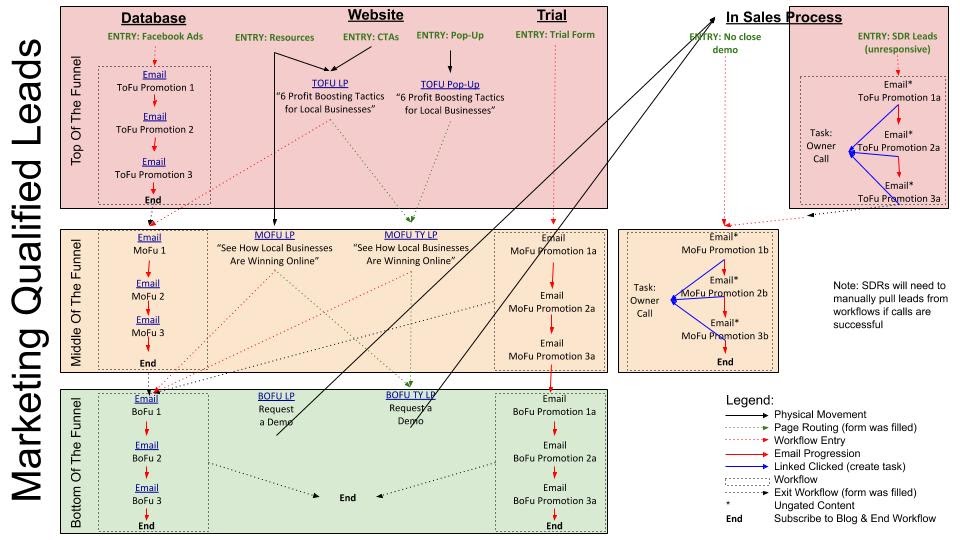
Next, you'll want to evaluate your content strategy. In order to do this, ask yourself the following questions:
If you find that your content strategy could use some improvement, then consider making changes to the types of content you're creating, the frequency of your content published, or the channels you're using to promote your content.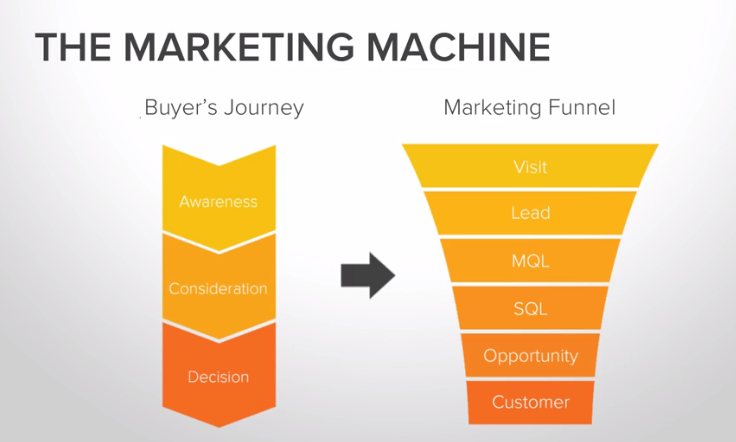
The next step in your audit is to assess your lead management processes. In order to do this, you'll want to answer the following questions:
If you find that your lead management could be improved, then consider making changes to the way you generate, capture, nurture, and convert leads.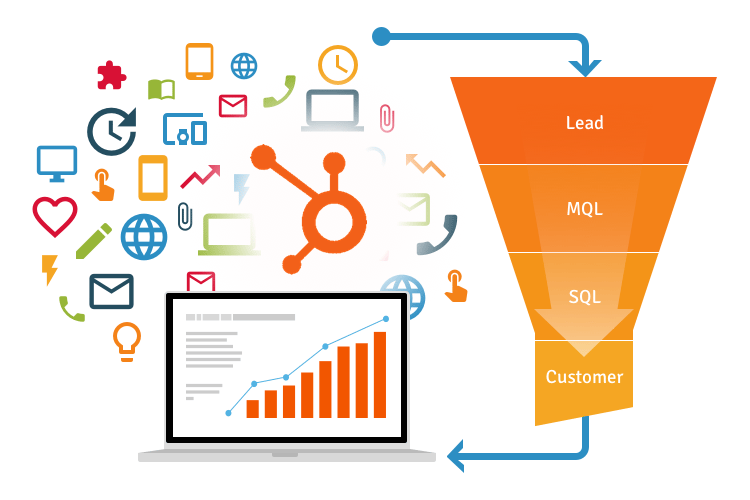
Finally, you'll want to evaluate your use of automation. In order to do this, ask yourself the following questions:
If you find that your use of automation could be improved, then consider making changes to the way you're using HubSpot's marketing automation features. Alternatively, if you're not currently using HubSpot's marketing automation features, then you may want to consider implementing them.
By conducting an audit of your HubSpot portal, you'll be able to identify any areas where the CRM system is not being used to its full potential. By taking the time to assess how the CRM system is being used by employees and making recommendations for improvement, you can help make sure that the CRM system is being used effectively and efficiently.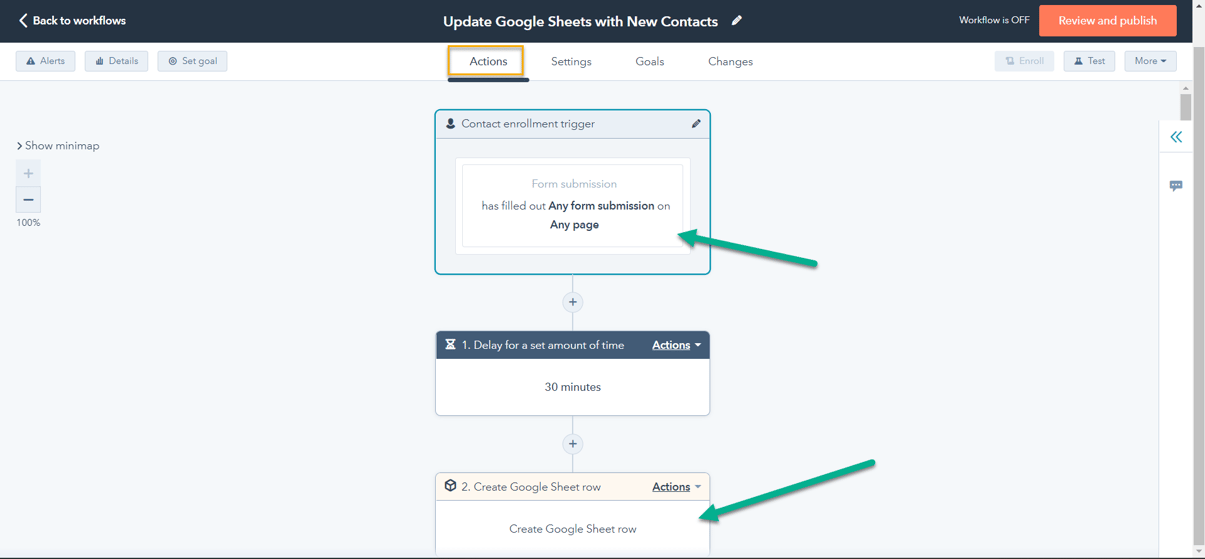
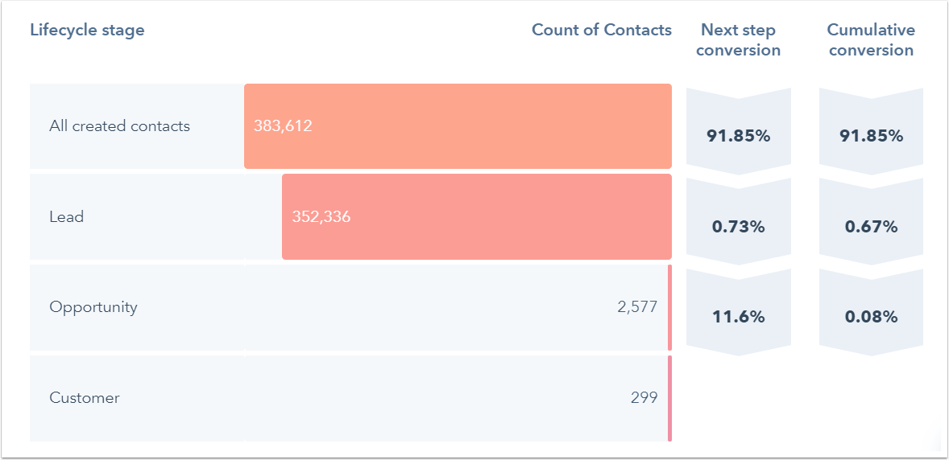
conducting an audit of your HubSpot portal, there are four key steps that you need to follow:
The first step in auditing your HubSpot portal is to check your contact list. This will give you an idea of how many HubSpot contacts you have in your database and whether or not they are organised into lists. It's also a good idea to check for duplicates at this stage. If you find that you have a lot of duplicate contacts, you can use the deduplication tool to clean up your list.
This will also help you to identify any outdated or incorrect data so that you can update your HubSpot lists accordingly. You should also take this opportunity to check that all of your contact lists are correctly segmented and that there are no duplicate entries.
The next step is to assess the performance of your marketing campaigns. This will help you to identify any areas that need improvement so that you can make changes accordingly. When assessing your campaigns, pay attention to metrics such as open rate, click-through rate, and conversion rate.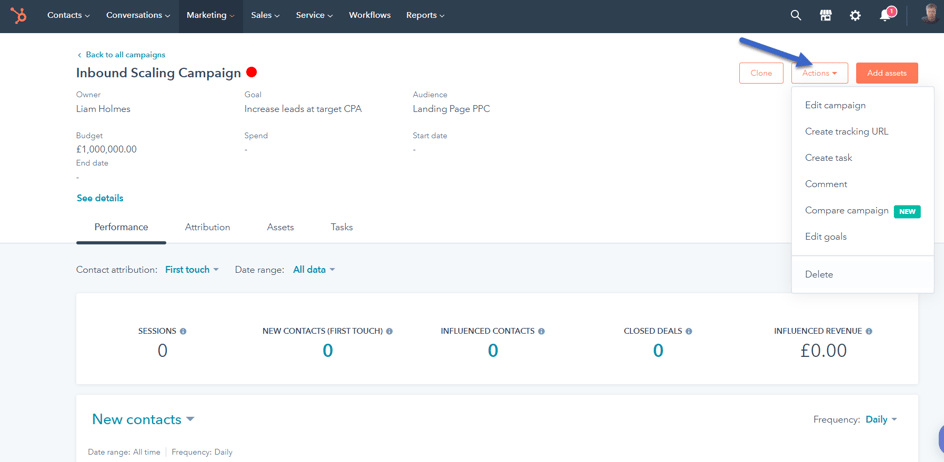
3. Analyse Your Website Traffic
Another important element of your audit should be to analyse your website traffic. This will give you insights into the pages that are performing well and those that need improvement. You should also use this opportunity to check for any broken links and to ensure that your website is optimised for search engines.
The fourth step in auditing your HubSpot portal is to evaluate your website traffic. This will give you an idea of how many people are visiting your site and which pages they're spending the most time on. If you notice any sudden drops in traffic, it's worth investigating to see if there are any underlying issues that need to be addressed.
Once you've reviewed your contact list and active campaigns, it's time to take a look at your lead flow. This will help you to understand how leads are moving through your funnel and identify any bottlenecks that may be causing problems further down the line..png?width=1080&height=532&name=HubSpot%20Audit%20lead%20flow%20(2).png)
Finally, you should review your sales pipeline as part of your audit. This will help you to identify any areas where there may be a bottleneck so that you can make changes accordingly. When reviewing your sales pipeline, pay attention to metrics such as conversion rate, average deal size, and close rate.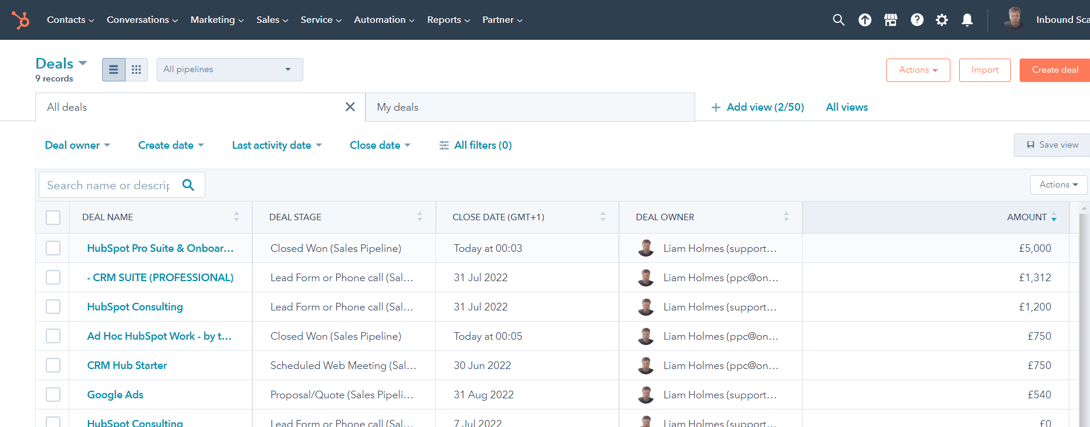
The final step in auditing your HubSpot portal is to assess your conversion rates. This will give you an indication of how effective your marketing efforts are and will allow you to identify any areas that need improvement. If you're not happy with your current conversion rates, now is the time to make some changes so that you can start seeing better results.
By following these four steps, you can conduct a comprehensive audit of your HubSpot portal and gain the confidence you are getting the most out of HubSpot.
Following an Objective Based Approach to Audit HubSpot
Understanding the nuances of your priorities and strategically addressing them will not only enhance your operational efficiency but also contribute to an overall improvement in your business outcomes.
• Which tasks, when completed, will notably enhance customer experience?
• Which tasks, when addressed, will alleviate pressure on the sales teams and enhance their efficiency?
• Which tasks can yield quick wins for our customers and internal team within a short timeframe?
• Which tasks, though requiring more time and potential additional resources, will ultimately streamline our operations?
Once you've pondered these questions, you can commence organising your tasks accordingly. It's crucial to bear in mind that the objective isn't an immediate overhaul or achieving 100% portal capacity. Rather, the aim is to make incremental progress, nudging the needle 10% or 20% further than your pre-audit status, which can yield substantial benefits.
In conclusion, delving into the realm of HubSpot audits has been a journey of empowering businesses to fine-tune their marketing strategies and elevate their digital presence. From comprehensively understanding the nuances of website performance, SEO health, and content effectiveness, to optimizing HubSpot portals for peak efficiency, the audit process is a pivotal tool for businesses seeking to thrive in the digital landscape. We've explored the significance of technical SEO elements, content quality, and user experience, recognizing them as pillars that uphold a robust online presence. Additionally, harnessing the capabilities of HubSpot tools and analytics emerged as a key theme, allowing businesses to glean actionable insights and make informed decisions. As we conclude this audit exploration, it's evident that regular and thorough evaluations are not just a checklist item but a strategic imperative for businesses committed to sustained growth and success in the digital age.
Integrating your WordPress website with HubSpot is a no-brainer. It is quick and easy, letting you harness the power of a unified website & CRM
HubSpot automation is a process of setting up workflows and rules within the HubSpot software to trigger certain events or actions to automate...
In this blog post, we're going to take a look at HubSpot lead nurturing capability, a leader in customer relationship management (CRM) and marketing...
Be the first to know about new HubSpot nsights to build or refine your business with the tools and knowledge of today’s best practises.